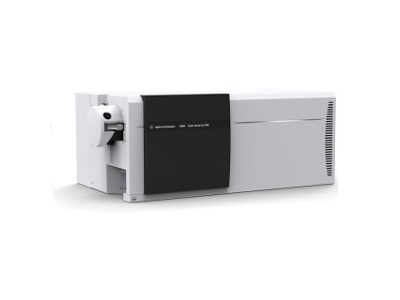About Agilent 6460

Agilent 6460 is a triple quadrupole Liquid Chromatography-Mass Spectrometry (LC-MS) type of spectrometer with Aligent jet stream technology. LC-MS means that it has an analytical chemistry technique that combines the physical separation capabilities of Liquid chromatography with the mass analysis capabilities of mass spectrometry. It delivers superior sensitivity for trace-level analysis with performance specifications in Instrument Detection Limit (IDL) and Signal-to-Noise ratio(S/N). It achieves sensitivity and resolution specifications with autotune.
Aligent 6460 uses three sets of parallel rods, which are two quadrupoles, and one hexapole. The first quadrupole separates ions into precursor ions fragmented in the hexapole. In the second quadrupole, the precursor ions from the hexapole get separated. Often, two or more precursor ions and their product ions get monitored in sequence in Multiple Reaction Monitoring (MRM) mode. Users can monitor up to 4000 MRM transitions by using Dynamic MRM.
What is a Mass Spectrometer?
A mass spectrometer is an instrument that measures the mass-to-charge ratio, abbreviated as (m/z), values, and their relative abundances of ions. It works by separating mixtures of substances into their original components, turning them into beams of particles, and then bending them with electricity and magnetism to make a kind of spectrum of different atoms that are easier to identify. The technique implemented above is known as mass spectrometry.
Uses of a mass spectrometer
A mass spectrometer has its application in vast areas in the corporate world. They include drug testing and discovery, food contamination detection, pesticide residue analysis, isotope ratio determination, protein identification, and carbon dating. However, the above area only utilizes the mass spectrometer’s essential functions to archive their different results. The primary functions of the mass spectrometer include:
- The identification of molecules in a mixture,
- The detection of impurities in a sample, t
- The analysis of a purified protein, and
- The study of a piece of cells’ protein content.
Components of a mass spectrometer
A mass spectrometer comprises three necessary components for its normal functioning. They include:
An Ion source
It generally produces gaseous ions from the study substance. The process commences with the vaporization of the sample. It means that the piece is converted into a gaseous state by the use of heat. It is important to note that a model can only be analyzed by mass spectroscopy if vaporization occurs without decomposing. The conversion of the vapor into ions occurs via the electron beams. The ionization occurs because the mass spectrometer measures the mass of charged particles. It means that only ions will be detected.
Analyzer
It resolves the ions into their characteristic mass components according to their mass-to-charge ratio(m/z).
The five main characteristics of measuring the performance of an analyzer are:
- By identifying the mass range limit, also known as the dynamic range.
- By identifying the analysis speed of the analyzer.
- By identifying the transmission rate. The transmission rate calculation occurs by dividing the number of ions reaching the detector and the number of ions entering the mass analyzer.
- By measuring the mass accuracy of the analyzer.
- By measuring the resolution of the analyzer.
The ion separation occurs in two stages inside the analyzer:
Acceleration
It merely means attraction. The positively charged ions created in the ionization stage accelerate towards the negatively charged plates at speed dependent on their mass. It is to indicate that the lighter ions will move quicker than the heavier ions.
Deflection
Here, the ions get deflected by a magnetic field. The extent of deflection is also dependent on the mass of the ion. Therefore, ions of different groups will travel through the analyzer at different speeds.
Detector System
The detectors’ role is to convert energy from the incoming ions into a current signal registered by the electronic devices and transferred to the spectrometer’s acquisition system. It merely detects the ions and records the relative abundance of each of the resolved ionic species.
Processes of a Mass Spectrometer
- The process begins with the production of ions from the sample in the ionization source.
- The ions produced are then separated by their mass-to-charge ratio in the mass analyzer.
- The dissolved ions are then fragmented and analyzed in a second analyzer.
- It then detects the ions emerging from the second analyzer and measures their abundance with the detector that converts the ions into electrical signals
- It finally processes the sensor’s signals and transmits them to the computer and control, basing the instrument’s power on feedback.











